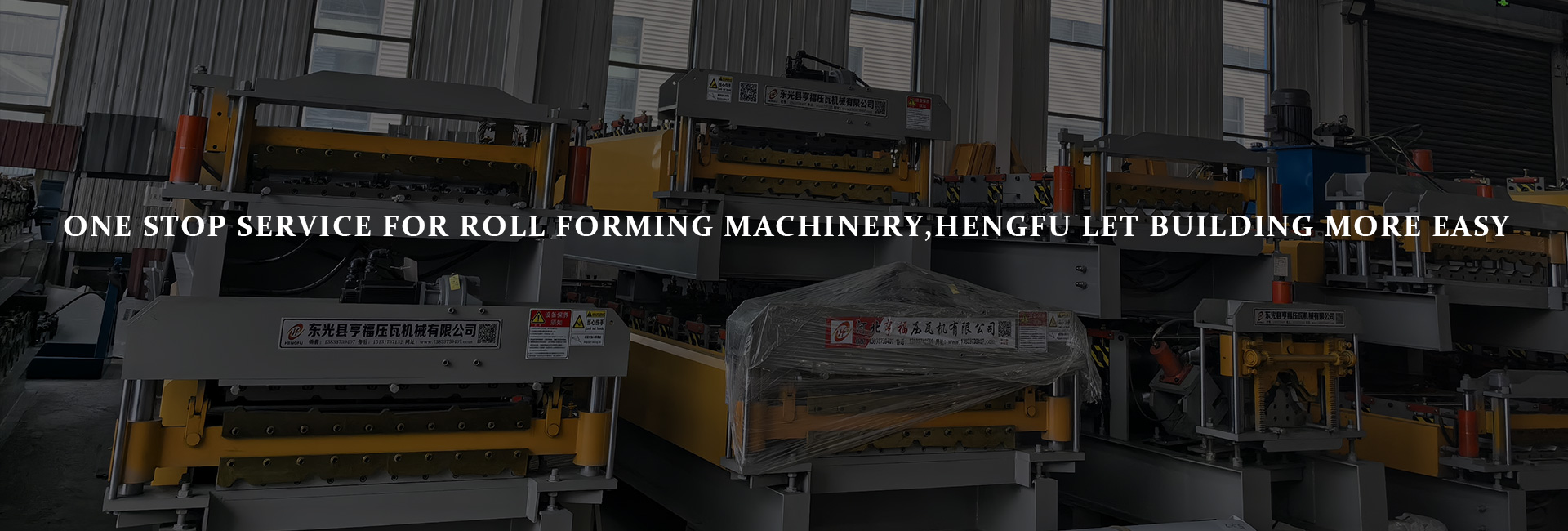In the current booming construction industry, metal roofing has emerged as the preferred choice for numerous large-scale projects due to its durability, aesthetic appeal, and ease of installation. As the core equipment for metal roof panel production, the performance of roof panel forming machines directly impacts project quality and construction efficiency. How can one select a suitable roof panel forming machine? This article provides a comprehensive purchasing guide, covering aspects such as equipment understanding, efficiency enhancement mechanisms, and purchasing and usage suggestions.
1. The Industry Value of Metal Roof Forming Machines
1.1 Market Growth and Efficiency Demands
With the construction industry's pursuit of standardization and industrialization, the market size for metal roofing continues to expand. Traditional manual processing and simple equipment can no longer meet the demands for large-scale, high-precision construction. Efficient and intelligent roof panel forming machines have thus become an inevitable choice for industry development.
1.2 Traditional Construction Pain Points vs. Advantages of Forming Machines
Traditional construction methods suffer from low production efficiency, significant material waste, high labor costs, and unstable forming accuracy. Roof panel forming machines address these issues at their core through automated production, high-precision processing, and multi-specification compatibility, significantly enhancing construction efficiency and quality.
1.3 Core Focus of This Article
This article delves into the principles, types, and technical parameters of roof panel forming machines, explores pathways for enhancing equipment efficiency, and provides scientific purchasing and usage suggestions for users.
2. Basic Understanding of Metal Roof Forming Machines
2.1 Equipment Definition and Functions
A roof panel forming machine is a specialized device that processes metal sheets into roof panels of specific shapes through a rolling process. It automatically completes tasks such as pressing and cutting the sheets according to preset profiles and dimensions, widely applied in metal roofing projects for industrial plants, commercial buildings, and large venues.
2.2 Core Components
Rolling System: Composed of multiple sets of rollers, it gradually deforms the metal sheet into the desired shape and is the key component determining forming quality.
Transmission Device: Responsible for providing power to the equipment and ensuring the stable operation of the rolling system, its performance affects the forming speed and stability of the equipment.
Control System: Enables precise control over equipment operating parameters such as forming speed, sheet length, and cutting position. Intelligent control systems also feature fault diagnosis and automatic adjustment functions.
2.3 Mainstream Machine Types
Classification by Number of Layers: Single-layer forming machines can only produce one type of roof panel profile at a time, while double-layer forming machines can switch between two different profiles on a single device, enhancing equipment utilization.
Classification by Automation Level: Includes semi-automatic and fully automatic forming machines. Semi-automatic machines require manual assistance for material feeding and parameter adjustment, while fully automatic machines automate the entire process from material feeding, forming, to discharging, significantly reducing manual intervention.
2.4 Technical Parameter Analysis
Forming Speed: Reflects the production efficiency of the equipment, with faster speeds yielding more roof panels per unit time. However, excessively high speeds may compromise forming accuracy.
Sheet Material Applicability: Includes the material type (e.g., color-coated steel sheets, aluminum-magnesium-manganese alloy sheets) and thickness range. Different project requirements necessitate different sheet specifications, so it is crucial to ensure the equipment can meet the required sheet dimensions.
Accuracy Indicators: Primarily refer to the dimensional accuracy and surface flatness of the formed roof panels. High-precision equipment reduces installation errors and enhances overall construction quality.
3. Core Mechanisms for Efficiency Enhancement
3.1 Automation Shortens Construction Periods
Fully automatic roof panel forming machines automatically complete tasks such as sheet conveying, forming, and cutting through preset programs, reducing manual operation time. They can operate continuously for 24 hours without frequent manual adjustments, significantly shortening construction cycles.
3.2 High Precision Reduces Waste
The precise rolling and cutting systems minimize processing errors of the sheets, avoiding material waste due to dimensional discrepancies. Additionally, stable forming quality reduces the likelihood of rework, further lowering costs.
3.3 Multi-Specification Compatibility Lowers Costs
Forming machines with multi-specification sheet compatibility can produce roof panels of different profiles and sizes through simple parameter adjustments and mold changes. This eliminates the need to purchase multiple devices for a single project, effectively reducing equipment procurement and maintenance costs.
3.4 Intelligent Control Optimizes Operations
Intelligent control systems simplify the operation process, requiring operators to only input parameters on the control panel for the equipment to run automatically. The system also monitors the equipment's operating status in real-time, providing early warnings of potential faults and reducing operational difficulty and maintenance costs.
4. Purchasing and Usage Suggestions
4.1 Selecting Models Based on Project Scale
Small Projects: For projects with small construction volumes and single profiles, semi-automatic single-layer forming machines are recommended due to their relatively low cost and simple operation, meeting basic production needs.
Large Projects: For large-scale projects with multiple profiles, fully automatic double-layer forming machines are suggested. These devices offer high production efficiency and strong compatibility, simultaneously meeting various construction demands.
4.2 Emphasizing Brand and After-Sales Service
Choosing well-known brands of roof panel forming machines ensures better product quality and technical processes. Additionally, a comprehensive after-sales service system can provide timely maintenance and technical support when equipment fails, minimizing downtime losses.
4.3 Routine Maintenance and Fault Prevention
Regularly clean and lubricate the equipment, inspect the wear conditions of rollers and transmission components, and promptly replace worn parts. Strictly adhere to the operating procedures to avoid equipment damage caused by improper operations.
4.4 Paying Attention to Industry Certifications and Safety Standards
When purchasing, confirm whether the equipment has passed relevant industry certifications, such as CE certification and ISO quality system certification. These certifications are important guarantees of equipment quality and safety, ensuring compliance with national and industry standards.
5. Industry Trends and Future Outlook
5.1 Intelligent Upgrades
In the future, roof panel forming machines will evolve towards greater intelligence. AI control technology can automatically optimize forming parameters based on sheet characteristics, while remote monitoring functions enable manufacturers to monitor equipment operating status in real-time and provide remote technical support.
5.2 Integration of Green and Environmentally Friendly Technologies
With increasing environmental requirements, equipment will place greater emphasis on energy consumption optimization, adopting energy-efficient motors and intelligent control systems to reduce operating energy consumption. Additionally, equipment design will consider material recycling to minimize waste emissions during production.
5.3 Market Competition and Technological Iteration
Intensified market competition will drive continuous technological innovation among enterprises. The application of new materials and process improvements will continually enhance the performance of roof panel forming machines to meet the growing demands of the construction industry.
6. Conclusion: Equipment Empowering Construction Transformation
As the core equipment for metal roofing construction, the performance and quality of roof panel forming machines directly impact project efficiency and quality. Through scientific purchasing and rational use, not only can construction efficiency be improved and costs reduced, but reliable quality assurance can also be provided for construction projects. In today's rapidly developing construction industry, selecting a suitable roof panel forming machine lays a solid foundation for project success. If you still have doubts about selecting a roof panel forming machine, feel free to explore more details about equipment selection and embark on a journey towards efficient production.







